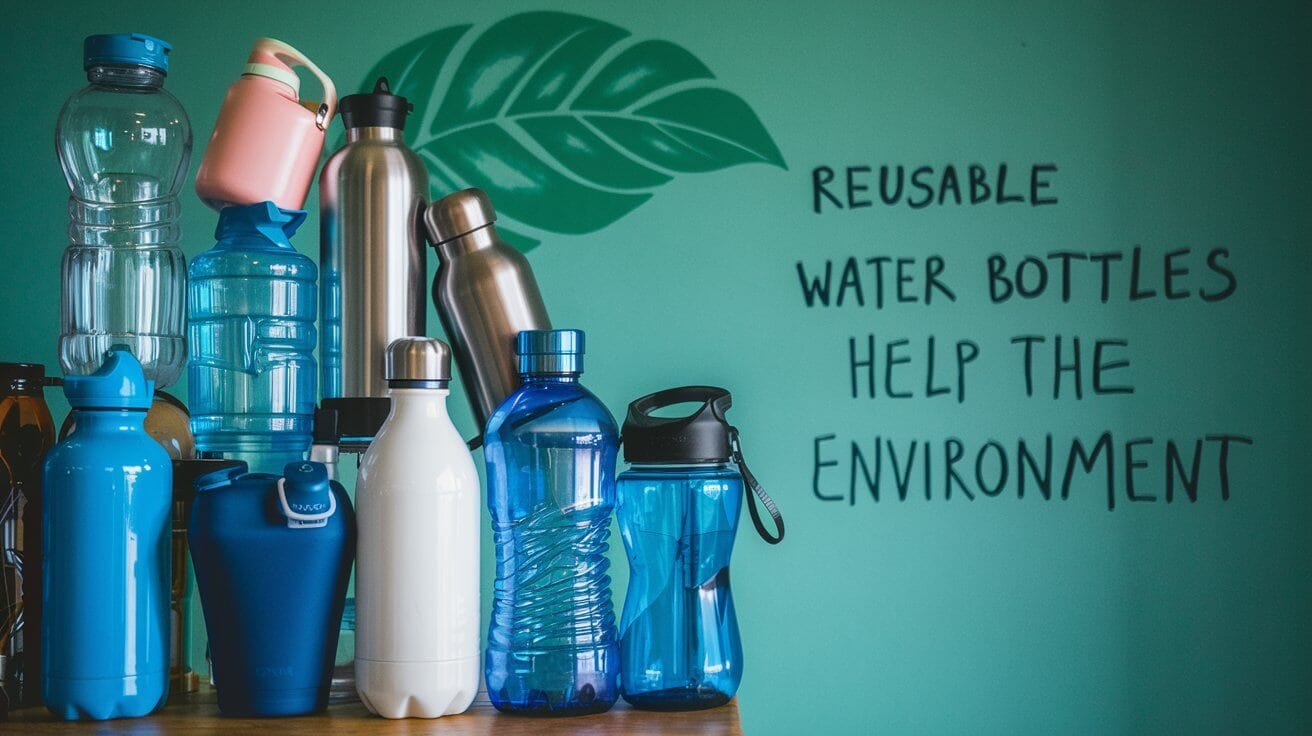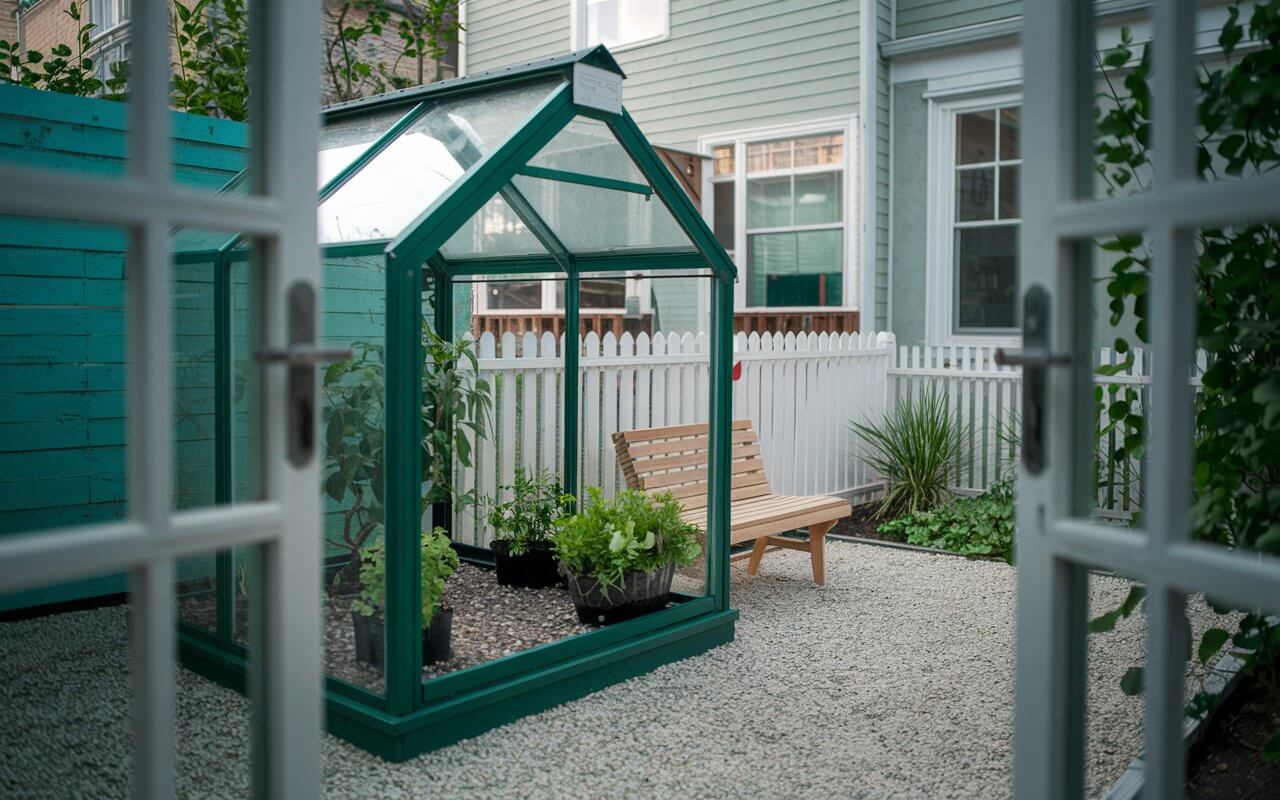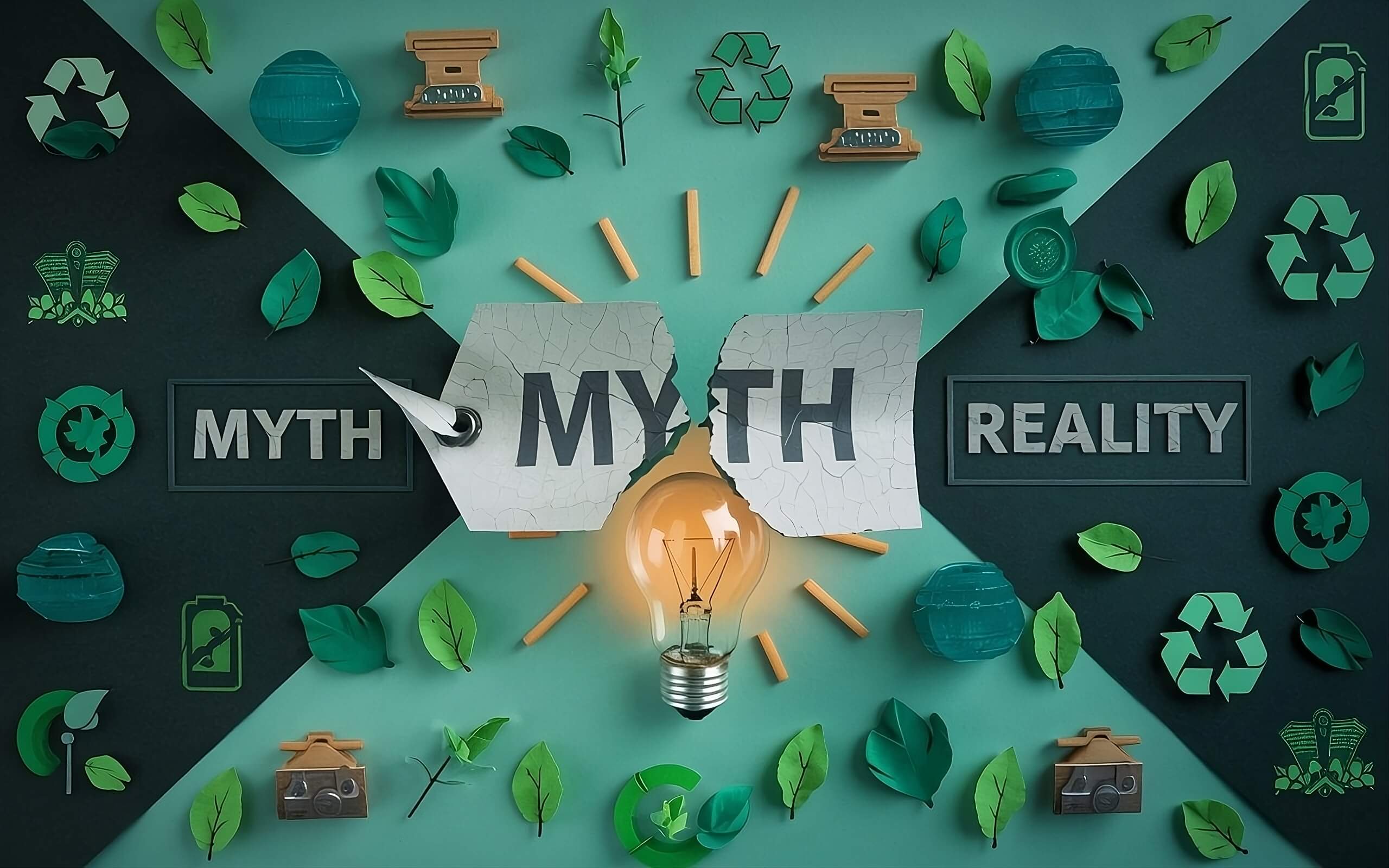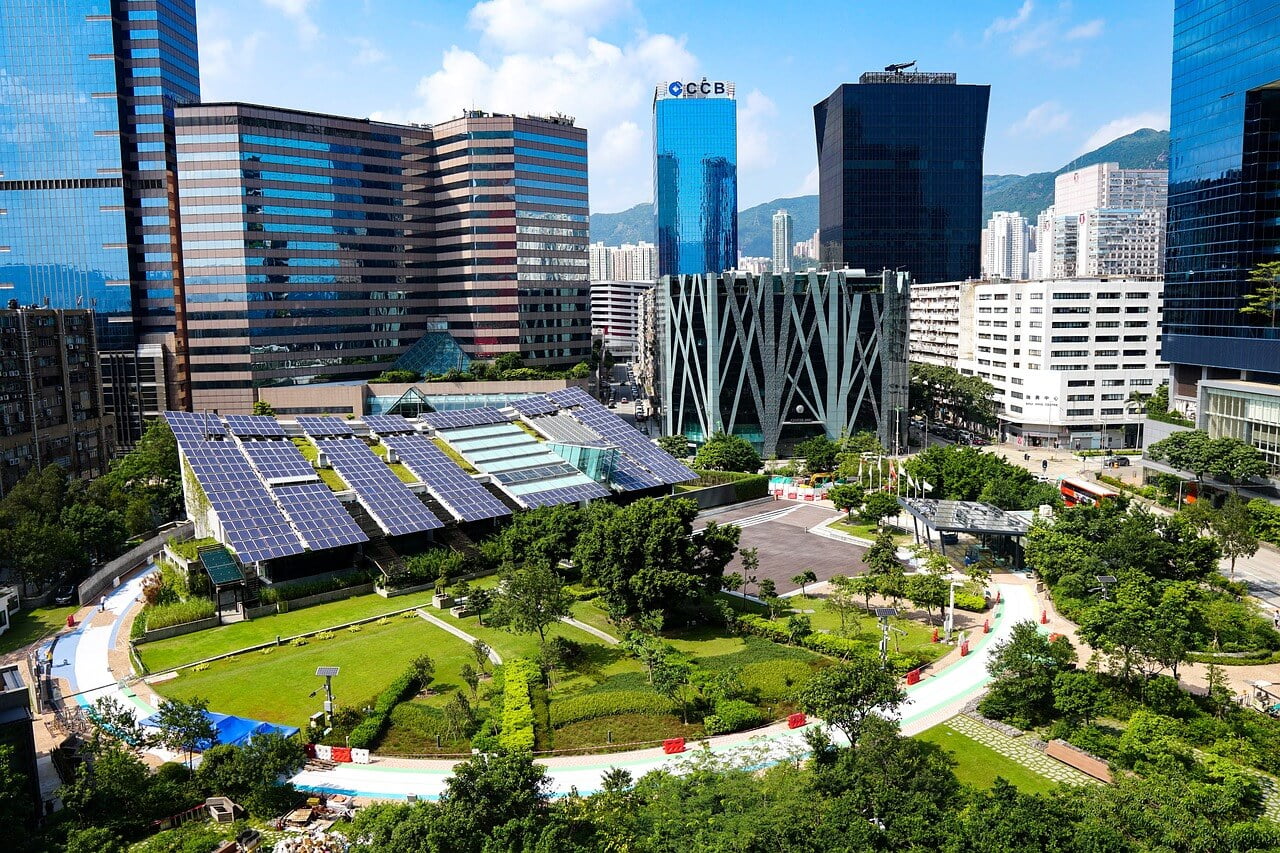Are you ready to transform your family’s lifestyle into one that prioritizes sustainability?
In a world where eco-friendly practices are more crucial than ever, adopting sustainable living habits can significantly impact our planet’s future.
The importance of adopting eco-friendly practices within family life can’t be overstated:
- Environmental Impact: The United Nations reports that households consume 29% of global energy and contribute to 21% of CO2 emissions. Families can significantly reduce their carbon footprint by making sustainable choices.
- Financial Savings: According to the U.S. Department of Energy, the average family can save $260 annually by using energy-efficient appliances and practices.
- Future Generations: By instilling eco-friendly values in our children, we’re preparing them to be responsible stewards of the planet.
This article offers practical tips for eco-friendly parenting because every small change contributes to a healthier environment for our children.
Discover how simple adjustments in your daily routine can lead to a greener, more sustainable family life!
Key Takeaways
- Conscious Consumerism: Teach kids to differentiate between wants and needs, focusing on eco-friendly products with minimal packaging.
- Waste Reduction: Embrace the 3 R’s; Reduce, Reuse, Recycle and start composting to minimize household waste.
- Sustainable Food Choices: Buy local and seasonal produce, and consider growing your own food to reduce your carbon footprint.
- Energy and Water Conservation: Adapt energy-saving habits and invest in water-efficient fixtures to lower utility bills and environmental impact.
- Community Engagement: Participate in local environmental initiatives and advocate for sustainability to inspire others and create a broader impact.
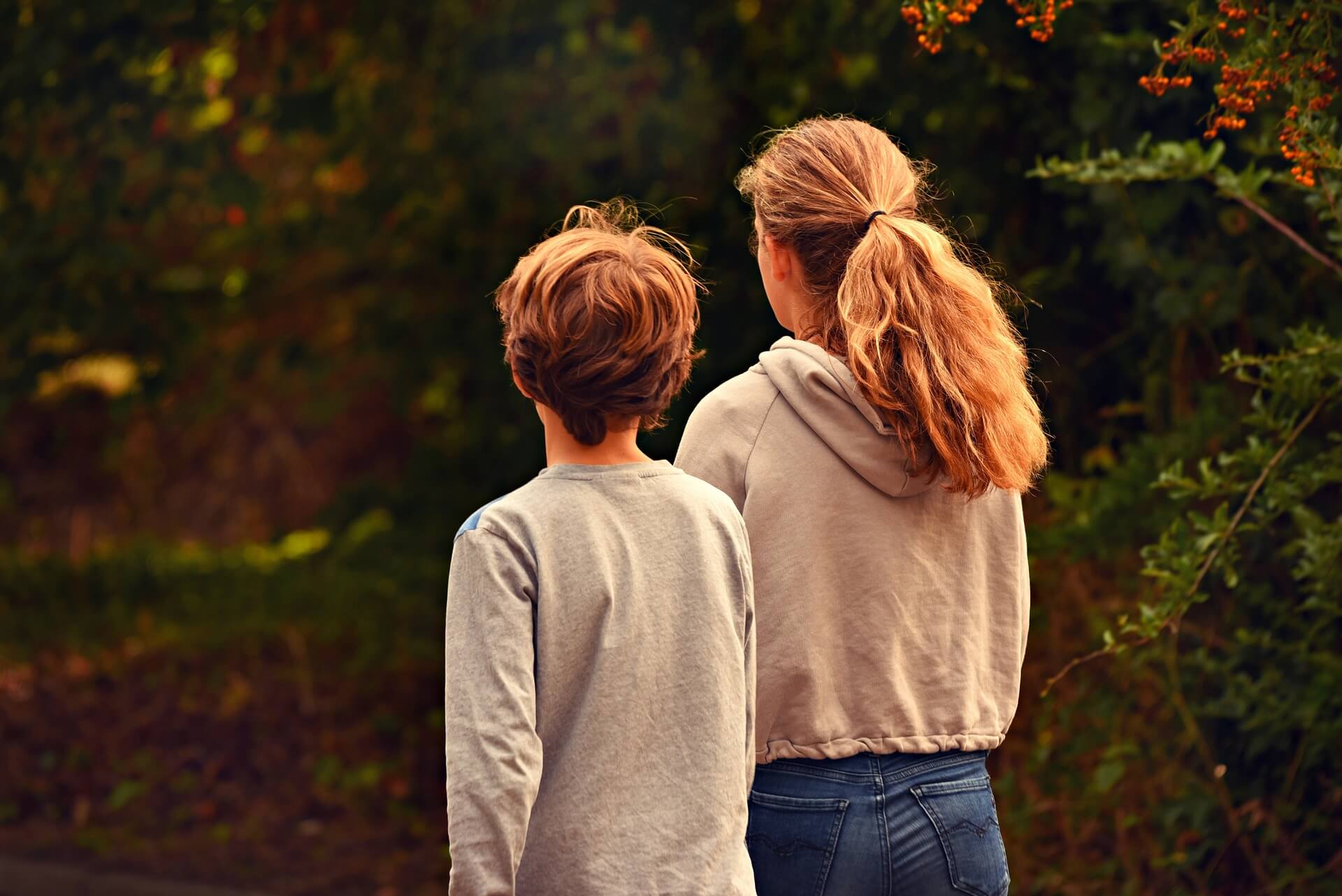
Page Contents
ToggleTip 1: Start with Conscious Consumerism
Make Mindful Purchasing Decisions
The first step towards sustainable living for families is to become more conscious consumers.
This means teaching children the difference between wants and needs and focusing on buying eco-friendly products with minimal packaging.
- Teach the difference between wants and needs: Have open discussions with your children about the things they truly need versus things they simply want. This helps develop critical thinking skills and reduces impulse buying.
- Focus on eco-friendly products: Look for items made from sustainable materials or those with certifications like ENERGY STAR for appliances or FSC for wood products.
- Choose minimal packaging: Opt for products with less packaging or those that use recyclable materials. The EPA estimates that packaging accounts for 30% of municipal solid waste in the U.S.
Example: Instead of buying disposable water bottles, invest in reusable water bottles for each family member.
This simple switch can save a family of four about 3,120 plastic bottles per year, assuming each person drinks 2 bottles of water a day.
Prioritize Quality Over Quantity
When it comes to sustainable living, less is often more.
Emphasize buying durable, long-lasting products and consider incorporating secondhand items into your daily life.
- Buy durable products: Invest in high-quality items that will last longer, even if they cost more upfront. This reduces waste and saves money in the long run.
- Embrace secondhand: Thrift shopping for children’s clothes and toys is not only economical but also reduces the demand for new products and their associated environmental impacts.
Example: Organize a neighborhood toy swap. This allows children to exchange toys they’ve outgrown for “new” ones without creating additional waste or spending money.
Tip 2: Reduce Household Waste
Embrace the 3 R’s: Reduce, Reuse, Recycle
Reducing household waste is a crucial aspect of sustainable living for families.
By embracing the 3 R’s – Reduce, Reuse, Recycle and you can significantly decrease your family’s environmental impact.
- Reduce: Cut down on unnecessary purchases and opt for products with less packaging.
- Reuse: Find creative ways to reuse items instead of throwing them away.
- Recycle: Properly sort and recycle materials that can’t be reduced or reused.
Set up a home recycling station and involve kids in the process. Make it a fun family activity by creating colorful labels for different recycling bins.
Tutorial: Easy Steps to Start Recycling at Home
- Research local recycling guidelines.
- Set up separate bins for different materials (paper, plastic, glass, etc.).
- Create clear labels for each bin.
- Educate family members on what goes where.
- Establish a routine for taking out recycling.
Start Composting
Composting is an excellent way to reduce waste while creating nutrient-rich soil for your garden.
According to the EPA, food scraps and yard waste together currently make up more than 30 percent of what we throw away.
Benefits of composting:
- Reduces methane emissions from landfills.
- Lowers your carbon footprint.
- Enriches soil, reducing the need for chemical fertilizers.
- Encourages the production of beneficial bacteria and fungi.
Case Study: A Family’s Experience Reducing Waste Through Composting
The Johnson family from Portland, Oregon, started composting two years ago. They report:
- A 40% reduction in their weekly trash output.
- Savings on garbage collection fees.
- Improved soil quality in their vegetable garden.
- Increased awareness of food waste among their children.
Tip 3: Adopt Sustainable Food Choices
Buy Local and Seasonal Produce
One of the most impactful ways families can practice sustainable living is through their food choices.
Buying local and seasonal produce not only supports local farmers but also significantly reduces your carbon footprint.
- Support local farmers: Purchasing from local farmers’ markets or joining a Community Supported Agriculture (CSA) program can reduce food miles and support your local economy.
- Reduce carbon footprint: The average meal in the United States travels about 1,500 miles from farm to plate. Buying locally can dramatically reduce this distance.
Example: Weekly Meal Planning Based on Seasonal Foods
| Season | Fruits | Vegetables | Meal Idea |
|---|---|---|---|
| Spring | Strawberries, Apricots | Asparagus, Peas | Spring Vegetable Risotto |
| Summer | Peaches, Watermelon | Tomatoes, Corn | Grilled Vegetable Salad |
| Fall | Apples, Pears | Pumpkin, Brussels Sprouts | Roasted Fall Vegetable Soup |
| Winter | Oranges, Grapefruit | Kale, Sweet Potatoes | Winter Citrus and Kale Salad |
Grow Your Own Food
Growing your own food is not only a fun family activity but also a great way to ensure fresh, pesticide-free produce for your meals.
Simple Steps for Starting a Family Garden:
- Choose a sunny spot in your yard or balcony.
- Decide on easy-to-grow vegetables like tomatoes, lettuce, or herbs.
- Prepare the soil or containers.
- Plant seeds or seedlings.
- Water regularly and watch your garden grow!
Tutorial: How to Grow Herbs and Vegetables from Kitchen Scraps
- Green Onions: Place the white root ends in a glass of water. Change the water every few days. New growth will appear in about a week.
- Lettuce: Place lettuce stems in a shallow bowl of water. New leaves will grow from the center.
- Celery: Cut off the base and place it in a shallow bowl of water. Transfer to the soil once new leaves appear.
- Basil: Place stems in water until roots grow about 2 inches long, then transfer to soil.
By adopting these sustainable food choices, families can significantly reduce their environmental impact while enjoying fresher, healthier meals.
Plus, involving children in gardening and meal planning can foster a lifelong appreciation for sustainable living practices.
Tip 4: Conserve Energy and Water
Teach Energy-Saving Habits
Instilling energy-saving habits in children from an early age is crucial for sustainable living.
These practices not only reduce your carbon footprint but also lead to significant savings on utility bills.
Key Energy-Saving Habits:
- Turn off lights when leaving a room.
- Unplug devices and chargers when not in use.
- Use natural light whenever possible.
- Close curtains to keep rooms cool in summer and warm in winter.
Example: Reducing Energy Bills with Smart Home Practices
The Brown family implemented energy-saving habits and saw their electricity bill decrease by 25% over six months. They:
- Replaced all bulbs with LEDs.
- Installed smart power strips.
- Used a programmable thermostat.
- Encouraged kids to be “energy detectives” and find ways to save power.
According to the U.S. Department of Energy, LED bulbs use at least 75% less energy and last 25 times longer than incandescent lighting.
Invest in Energy-Efficient Appliances
Choosing energy-efficient appliances can make a substantial difference in your home’s energy consumption.
Benefits of Energy-Efficient Appliances:
- Lower utility bills.
- Reduced environmental impact.
- Often, it has better performance than older models.
Tutorial: How to Identify Energy-Saving Features
- Look for the ENERGY STAR label.
- Check the Energy Guide label for estimated annual operating costs.
- Compare kWh usage between models.
- Consider features like low-flow options for dishwashers and washing machines.
Water Conservation Tips
Water conservation is another crucial aspect of sustainable living.
Here are some family-friendly water-saving tips:
- Fix leaky faucets promptly.
- Install low-flow showerheads and faucet aerators.
- Collect rainwater for watering plants.
- Turn off the tap while brushing your teeth or washing dishes.
Fact: A family of four can save up to 18,000 gallons of water per year by installing water-efficient fixtures and appliances.
Tip 5: Choose Eco-Friendly Transportation
Transitioning to greener transportation options is a significant step towards sustainable living for families.
By reducing your carbon footprint on the road, you’re not only helping the environment but also setting a positive example for your children.
Encourage Walking, Biking, and Public Transit
One of the most effective ways to reduce your family’s carbon emissions is to ditch the car for short trips.
Here are some practical tips to get started:
- Walk or bike for short errands: For trips under 2 miles, consider walking or biking. It’s not only eco-friendly but also great exercise for the whole family.
- Use public transportation: For longer trips, opt for buses or trains. Many cities offer family passes or discounts for children.
- Participate in a “Walking School Bus”: Organize with other parents to take turns walking a group of children to school. This not only reduces emissions but also builds community.
Example: The Johnson family in Portland, Oregon, switched to biking for their daily school run.
They report not only reducing their carbon footprint but also enjoying increased family bonding time and improved fitness levels. Their story was featured in a local sustainability magazine, inspiring other families to follow suit.
Consider Carpooling and Electric Vehicles
When car travel is necessary, there are still ways to make it more sustainable:
- Carpooling: Coordinate with other families for school runs or extracurricular activities. This reduces the number of cars on the road and can save on fuel costs.
- Electric Vehicles (EVs): If you’re in the market for a new car, consider an electric or hybrid vehicle.
EV Adoption Tips:
- Research available tax incentives for EV purchases in your area.
- Plan your charging routine, considering home charging options and public charging stations.
- Educate your children about the benefits of EVs, turning it into a learning opportunity about sustainable technology.
By implementing these eco-friendly transportation strategies, families can significantly reduce their carbon footprint while teaching children valuable lessons about sustainability and environmental responsibility.
Tip 6: Make Green Home Improvements
Transforming your living space into an eco-friendly haven not only reduces your family’s environmental impact but also creates a healthier living environment.
Let’s explore two key areas where you can make significant improvements.
Improve Home Insulation
Proper insulation is crucial for maintaining energy efficiency in your home.
According to the U.S. Department of Energy, heating and cooling account for about 50-70% of the energy used in the average American home.
Benefits of Good Insulation:
- Reduces energy consumption.
- Lower utility bills.
- Improves indoor comfort.
- Decreases carbon footprint.
Example: The Martinez family in Chicago decided to improve their home’s insulation as part of their sustainable living journey. They focused on:
- Sealing air leaks around windows and doors.
- Adding insulation to the attic.
- Insulating the basement walls.
The result? They saw a 20% reduction in their energy bills within the first year and reported a much more comfortable living environment.
DIY Insulation Tips:
- Use weatherstripping around doors and windows.
- Apply caulk to seal small gaps.
- Install foam gaskets behind outlet covers on exterior walls.
- Add a layer of radiant barrier in the attic.
For more complex insulation projects, consider consulting with a professional energy auditor to identify areas for improvement.
Install Solar Panels
Harnessing the power of the sun is an excellent way to reduce your reliance on non-renewable energy sources.
The Solar Energy Industries Association reports that the cost of installing solar has dropped by more than 70% over the last decade, making it more accessible for families.
Benefits of Solar Energy:
- Reduces or eliminates electricity bills.
- Increases home value.
- Provides clean, renewable energy.
- Offers potential tax incentives.
Getting Started with Solar:
- Assess your home’s solar potential: Consider factors like roof condition, shading, and local climate.
- Research local regulations and incentives: Check for any zoning restrictions and available tax credits or rebates.
- Get multiple quotes: Compare offers from different solar installers to find the best deal.
- Consider financing options: Explore solar loans, leases, or power purchase agreements if upfront costs are a concern.
Case Study: The Patel family in Arizona installed a 5kW solar system on their roof.
Within two years, they recouped their investment through energy savings and tax incentives. They now produce more energy than they consume, selling the excess back to the grid.
Tip 7: Educate Kids About Nature
Fostering a deep connection with nature is crucial for raising environmentally conscious children.
By encouraging outdoor activities and teaching respect for wildlife, you’re laying the foundation for a lifelong appreciation of our planet.
Encourage Outdoor Activities
Spending time in nature has numerous benefits for children.
A study published in Frontiers in Psychology found that children who spend more time in nature show improved cognitive function, better mood, and reduced stress.
Ideas for Family Nature Activities:
- Nature Scavenger Hunts: Create a list of natural items for kids to find, like specific leaves, rocks, or animal tracks.
- Stargazing: Use a star chart or app to identify constellations on clear nights.
- Nature Journaling: Encourage kids to draw or write about their observations during outdoor explorations.
- Gardening: Start a family vegetable or flower garden to teach about plant life cycles and ecosystems.
Example: The Thompson family in Oregon started a tradition of monthly family nature walks.
They explore different local trails each month, learning about native plants and animals. The kids keep nature journals, which have become treasured family keepsakes and educational resources.
Teach Respect for Wildlife
Understanding ecosystems and biodiversity is key to developing respect for all living things.
The National Wildlife Federation reports that teaching children about wildlife can foster empathy, improve problem-solving skills, and encourage environmental stewardship.
Ways to Teach Wildlife Respect:
- Visit local wildlife centers or sanctuaries.
- Watch nature documentaries together.
- Read books about different ecosystems and animals.
- Participate in citizen science projects like bird counting.
Tutorial: Creating a Wildlife-Friendly Garden
Transform your backyard into a haven for local wildlife with these steps:
- Plant native species: Research plants native to your area that provide food and shelter for local wildlife.
- Provide water sources: Install a birdbath or small pond for animals to drink and bathe.
- Create shelter: Leave some areas of your garden “wild” or add birdhouses and insect hotels.
- Avoid pesticides: Use natural pest control methods to protect beneficial insects and other wildlife.
- Install wildlife corridors: If possible, create gaps in fences to allow small animals to move between gardens.
Case Study: The Gonzales family in Texas turned their suburban backyard into a certified wildlife habitat.
They involved their children in every step, from researching native plants to building birdhouses.
The project not only attracted a variety of birds, butterflies, and small mammals but also sparked a passion for conservation in their children.
Tip 8: Integrate Sustainable Parenting Practices
Sustainable parenting involves making eco-friendly choices in your daily routines and teaching your children the value of mindful consumption.
Let’s explore two key areas where you can make a significant impact.
Choose Eco-Friendly Baby Products
The baby care industry is notorious for generating waste, but there are many sustainable alternatives available.
According to the Environmental Protection Agency, disposable diapers account for 7% of nondurable household waste in landfills.
Sustainable Baby Care Options:
- Cloth Diapers: Modern cloth diapers are easy to use and can save up to 6,000 diapers per child from landfills.
- Reusable Wipes: Washable cloth wipes reduce waste and are gentler on baby’s skin.
- Natural Baby Care Products: Choose organic, biodegradable products free from harmful chemicals.
- Secondhand or Upcycled Clothing: Babies outgrow clothes quickly, so consider pre-loved options.
Example: Sarah and Tom switched to cloth diapers for their second child.
They found that not only did they save money in the long run, but they also reduced their household waste by 50%.
They shared their experience on a parenting blog, inspiring other families to make the switch.
Cost Comparison: Disposable vs. Cloth Diapers
| Type | Initial Cost | Running Cost (3 years) | Total Cost (3 years) |
|---|---|---|---|
| Disposable | $0 | $2,000 – $3,000 | $2,000 – $3,000 |
| Cloth | $300 – $800 | $200 – $600 | $500 – $1,400 |
Introduce Minimalism to Children
Teaching children the value of experiences over possessions can lead to more sustainable lifestyle choices.
Benefits of Minimalism for Children:
- Reduces clutter and waste.
- Encourages creativity and imagination.
- Teaches the value of experiences over things.
- Promotes gratitude and contentment.
Tips for Minimalist Parenting:
- Quality over Quantity: Choose fewer, high-quality toys that encourage open-ended play.
- Rotate Toys: Store some toys away and rotate them periodically to maintain novelty without acquiring more.
- Encourage Non-Material Gifts: Suggest experiences or memberships as gifts from family and friends.
- Practice Gratitude: Make a habit of discussing what you’re thankful for as a family.
Tip 9: Involve Your Kids in Sustainable Family Practices
Getting children involved in sustainable living practices not only helps the environment but also instills valuable life skills and environmental awareness.
Here are some effective ways to engage your kids in eco-friendly habits:
Assign Eco-Related Chores
Giving children responsibilities related to sustainability can make them feel empowered and invested in eco-friendly practices.
Consider these ideas:
- Set up a recycling station at home and make sorting recyclables a fun family activity.
- Assign gardening tasks like watering plants or composting kitchen scraps.
- Encourage energy-saving habits by making kids responsible for turning off lights and unplugging devices.
A study by the University of British Columbia found that children who participate in household sustainability practices are more likely to continue these habits into adulthood.
Case Study: The Green Chore Chart
The Johnson family in Portland, Oregon, implemented a “Green Chore Chart” for their three children, ages 6, 9, and 12. Each week, the kids rotated through eco-friendly tasks such as:
- Recycling Captain: Responsible for sorting recyclables and taking out recycling bins
- Energy Guardian: Checks for and turns off unused lights and electronics
- Water Watcher: Ensures taps aren’t left running and collects rainwater for plants
- Compost King/Queen: Manages the compost bin and educates family on compostable items
The family reported a 30% reduction in their household waste and a 15% decrease in their energy bill after six months of implementing the chart.
More importantly, the children developed a strong sense of environmental responsibility and pride in their contributions.
Educate Through Books and Media
Introducing eco-friendly concepts through engaging books and media can make learning about sustainability fun and memorable for kids:
- Books for different age groups:
- Ages 3-6: “The Lorax” by Dr. Seuss
- Ages 7-10: “The Magic School Bus and the Climate Challenge” by Joanna Cole
- Ages 11+: “No One Is Too Small to Make a Difference” by Greta Thunberg
- Educational shows and documentaries:
- “Our Planet” (Netflix) – A stunning nature series that highlights the importance of conservation
- “Bill Nye Saves the World” (Netflix) – Episodes on climate change and renewable energy
- “The Story of Plastic” (Discovery+) – An eye-opening look at plastic pollution suitable for older kids
- Apps and games:
- “Recycle Hero” – A sorting game that teaches proper recycling
- “Plant-for-the-Planet” – An app that allows kids to plant virtual and real trees
Tip 10: Engage with the Community
Extending your family’s eco-friendly practices beyond your home can have a ripple effect, inspiring others and creating a more significant positive impact on the environment.
Here’s how you can engage with your community:
Participate in Local Environmental Initiatives
Getting involved in community-based environmental activities not only benefits the planet but also helps your family build connections and develop a sense of local pride:
- Community Clean-ups: Join or organize local clean-up events in parks, beaches, or neighborhoods. The Ocean Conservancy’s International Coastal Cleanup reported that in 2019, nearly 1 million volunteers collected more than 20 million pieces of trash worldwide.
- Tree Planting Events: Participate in urban forestry initiatives.
- Community Gardens: Get involved in or start a community garden.
By engaging with your community, you’re not only expanding the impact of your family’s eco-friendly practices but also teaching your children valuable lessons about civic responsibility and the power of collective action.
Remember, every small action counts, and when communities come together, they can create significant positive change for the environment.
People Also Asked
1. How can I teach my children about sustainability?
Teaching kids about sustainability can be fun and engaging:
- Lead by example: Show sustainable practices in daily life.
- Make it interactive: Use games and hands-on activities to explain concepts.
- Start a family garden: Teach about food cycles and ecosystems.
- Encourage questions: Foster curiosity about environmental issues.
- Use age-appropriate resources: Books, documentaries, and apps can help explain sustainability.
2. What are the challenges of sustainable living for families?
Common challenges include:
- Time constraints: Balancing sustainable practices with busy family schedules.
- Initial costs: Some eco-friendly products have higher upfront prices.
- Resistance to change: Family members may be reluctant to adopt new habits.
- Information overload: Sorting through conflicting sustainability advice.
- Social pressure: Dealing with non-sustainable practices in social settings.
3. How do I create a sustainable home environment for my children?
Creating a sustainable home involves:
- Choose non-toxic, eco-friendly materials for furniture and decor.
- Implement energy-saving practices like using LED bulbs and smart thermostats.
- Set up recycling and composting systems that are easy for kids to use.
- Use water-saving fixtures in bathrooms and kitchens.
- Incorporate indoor plants to improve air quality and teach about nature.
4. How to create a budget for sustainable living with kids?
Budgeting for sustainable family living:
- Prioritize sustainable swaps: Start with changes that offer the most impact.
- Invest in quality, durable items to reduce long-term costs.
- Look for secondhand options for clothing, toys, and furniture.
- Plan meals to reduce food waste and save on groceries.
- Consider long-term savings from energy-efficient appliances and home improvements.
- Allocate funds for experiences rather than material possessions.

